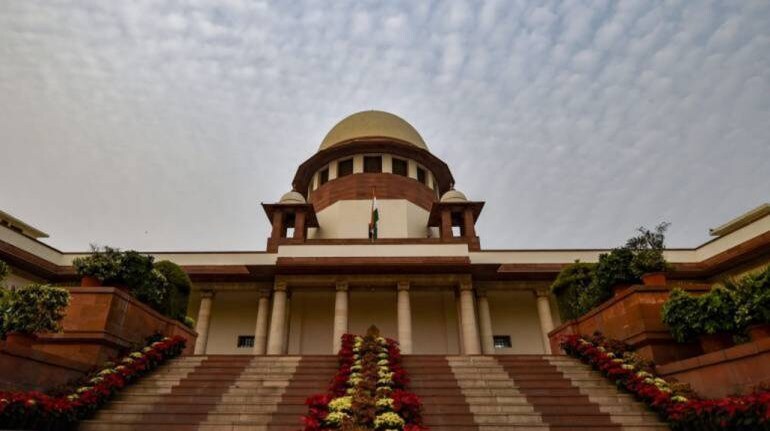



The Supreme Court Wednesday said India resiliently fought back the unprecedented situation created by the COVID-19 pandemic and the economy as also life of the common man is on the path towards normalcy in a shorter period of time than expected. Citing disaster management laws, the apex court noted that the country already had in place legal and administrative instruments to empower the State to contain and manage the several crisis that would arise from the pandemic.
It said the pandemic has left its footprints for all to learn from the unprecedented situation which everyone has come across.
It suddenly changed the lifestyle of every individual in the society, the way of working, and from social security to human rights, from macro economy to household income, the court said.
The pandemic has made everyone stronger to face, "if any difficult situation arises in future and this is what by experience we learn", it said.
These observations were made by a bench of Justices A M Khanwilkar, Indu Malhotra and Ajay Rastogi while dismissing a plea seeking an extra attempt in UPSC civil services to those candidates who have exhausted their last chance in 2020 preliminary examination or have got age barred from appearing in future tests amid the COVID-19 pandemic.
There is an old saying 'there is good in every evil'. Still life has to move on in all situations, and this is what this country has faced, but resiliently fought back this unprecedented situation and the economy and life of the common man is on the path towards normalcy in a short period of time than expected, the bench said.
"Different countries introduced various policies in meeting out the widespread socioeconomic implications but the COVID-19 pandemic has left its footprints for us to learn from the unprecedented situation, which everyone has come across and suddenly changed the lifestyle of every individual in the society, his way of working, from social security to individual human rights, from macro economy to household income and has made us more stronger to face, if any difficult situation arises in future and this is what by experience we learn," it said.
The top court observed that there is no doubt that for India or for the rest of the world, COVID-19 has been a disaster of unprecedented proportions and the crisis of pandemic has provided the sternest test for disaster management response.
Due to unprecedented spread of the virus, the world had gone into a virtual lockdown as several countries initiated strict screening of potential cases introduced in their territory. Disasters are testing times for the institutions and individuals, processes and procedures, and policies and their implementation mechanisms, it said.
The bench said, We can take judicial notice that when COVID-19 struck India, the country already had in place legal and administrative instruments to empower and enable the State to contain and manage the several crisis that would arise from the pandemic. Two of the most legal instruments are the Distaster Management Act, 2005 and the Epidemic Diseases Act, 1897 amended in the year 2020.
It said that after the World Health Organization (WHO) declared COVID-19 as a global pandemic, countries were forced to stop international travelling as well as locked up themselves because of the rampant spread of virus.
Also, the lockdown has been recognised at the given point of time as the only method to control the spread of the pandemic and almost every country has adopted this method, it said.
It noted that on March 25, 2020, the Disaster Management Act 2005 (DM Act) was invoked in India for the first time since it was passed almost a month and a half ago, to tackle the COVID-19 pandemic that was then in its initial stages of spreading.
It said that the National Disaster Management Authority (NDMA) which was created by the Ministry of Home Affairs in pursuance of the Disaster Management Act 2005 had issued a notification dated March 24, 2020 under the provision of the DM Act.
The order directed the ministries and departments of Government of India and State Governments along with State Disaster Management Authorities to take measures for ensuring social distancing so as to prevent the spread of Covid19 in the country, it said, adding that the several measures attempted to control the ingress of the virus in India.
It noted that countrywide lockdown measures were adopted March 25- April 15, 2020 (Lockdown-1), April 16, 2020 to May 3, 2020 (Lockdown-2) and Lockdown-3 and 4 (May 4, 2020 to May 17, 2020 and then through May 31st), which varied in scope and nature, depending on the situation on the ground.
Discover the latest Business News, Sensex, and Nifty updates. Obtain Personal Finance insights, tax queries, and expert opinions on Moneycontrol or download the Moneycontrol App to stay updated!
Find the best of Al News in one place, specially curated for you every weekend.
Stay on top of the latest tech trends and biggest startup news.